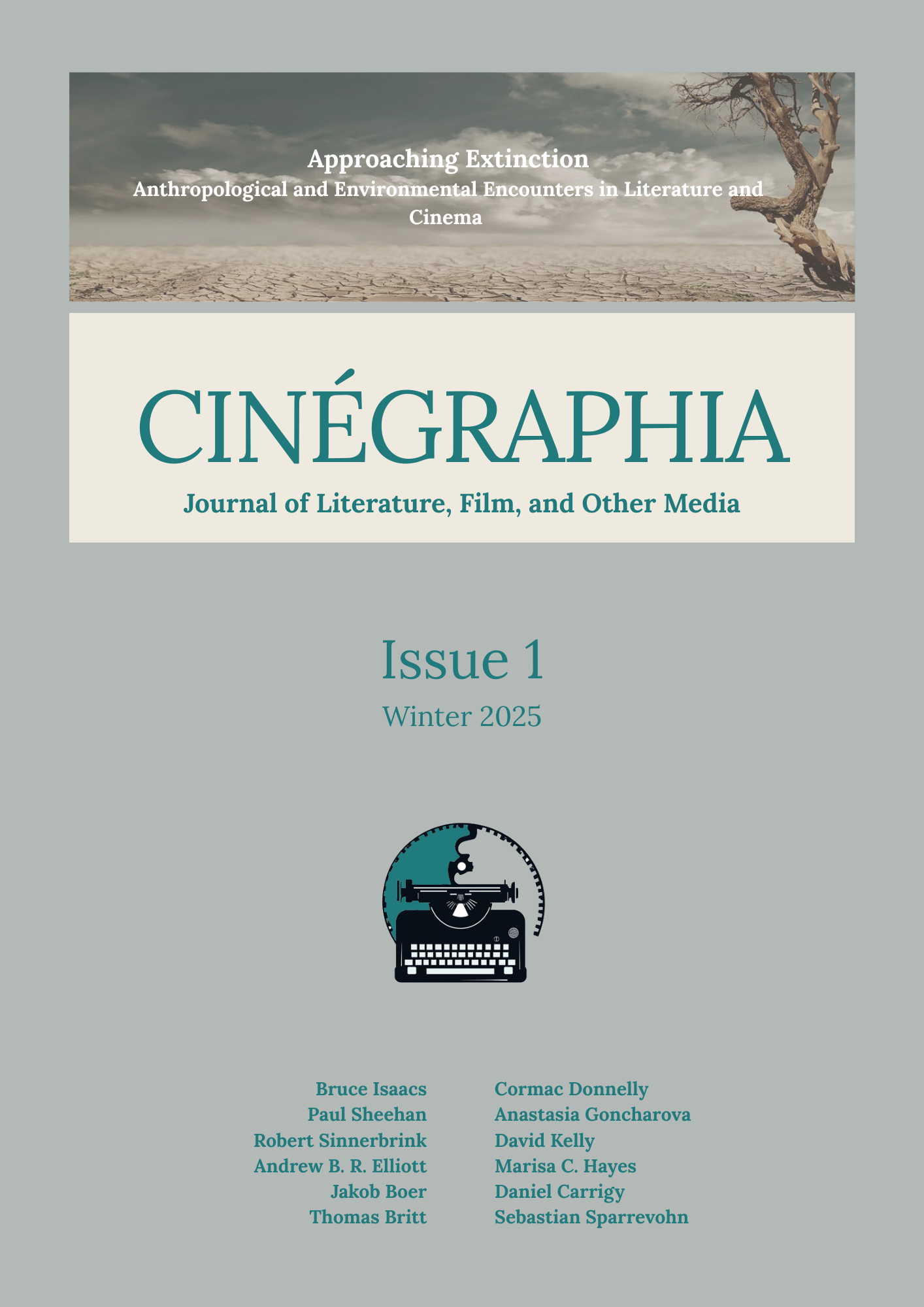Archives
-

Approaching Extinction: Anthropological and Environmental Encounters in Literature and Cinema
Vol. 1 No. 1 (2025)This first issue begins to outline just such a project, in its focus on how the Anthropocene and the climate crisis have been ‘written’ by filmic practices and narrative formations. At the core of the issue is a cluster of articles that emerged from the fifth Caméra-Stylo conference – the biennial forum that is the major ‘event’ platform for the Sydney Literature and Cinema Network, just as Cinégraphia is the Network’s publishing outlet – in 2023. Presented under the auspices of the “Approaching Extinction” thematic, these articles consider the climate emergency through various generic frames and ways of thinking.
How can the eco-documentary simultaneously raise awareness, change attitudes and foster political action, in the face of environmental collapse? Robert Sinnerbrink argues that neither didacticism nor aestheticism alone can achieve these goals, but together, in what he calls a ‘poetico-discursive’ approach, they might provide a sufficiently probing response to the crisis. For Andrew B. R. Elliott, the disaster movie is the most reliable barometer of post-apocalyptic anxiety – principally, because it looks not to the future but to the past, in reproducing the colonialist logic of geographic escape. Other histories, in Elliott’s estimation, might yet offer ways of seeing beyond the anthropocentric dicta of globalisation. Jakob Boer brings eco-cinema into a taut dialogue with slow cinema, taking note of spectatorship and modes of viewing. He finds eco-cinema scholarship to be insufficiently empirical, and proposes that it engage more with other disciplinary practices (media psychology, sociology of the arts). And Thomas Britt shifts the discussion away from the cinema to analyse how forms of survival are figured in television and graphic literature. As Britt argues, the threat of extinction is tempered by graphic novels or comics that exert formidable influences over the wider stories and the human agents embroiled in them.
As well as these ‘print’ articles, the issue features two video essays that also expatiate on the poetics of extinction premise. Cormac Donnelly uses the aesthetics of the movie trailer to reconsider the ‘anthropocene’, downgraded from epoch to event, as a self-devouring reflection of zombie-horror disruption. And Anastasia Goncharova suggests that the coming-of-age story, the stalwart genre that traditionally lauds maturity, is now riven with anguish, uncertainty, and despondency about the future. (As the video essays are online artefacts, they are represented in the journal by interviews with their creators.) The final article in this issue is from the Caméra-Stylo archive: David Kelly’s searching analysis of Dashiel Hammett’s prose and John Huston’s direction, outlining how an Astruc-like symbiosis of word and image cannily begat the noir genre. In our book review section, there are encounters with studies of David Lynch’s ‘dreamscapes’, and how they interact with non-cinematic cultural forms, such as literature; a Western-inflected, graphic novel series that posits the United States as divisive and dystopian; and the adaptational strategies implemented by Apple TV+ to bring a post-apocalyptic SF novel series to the screen.


